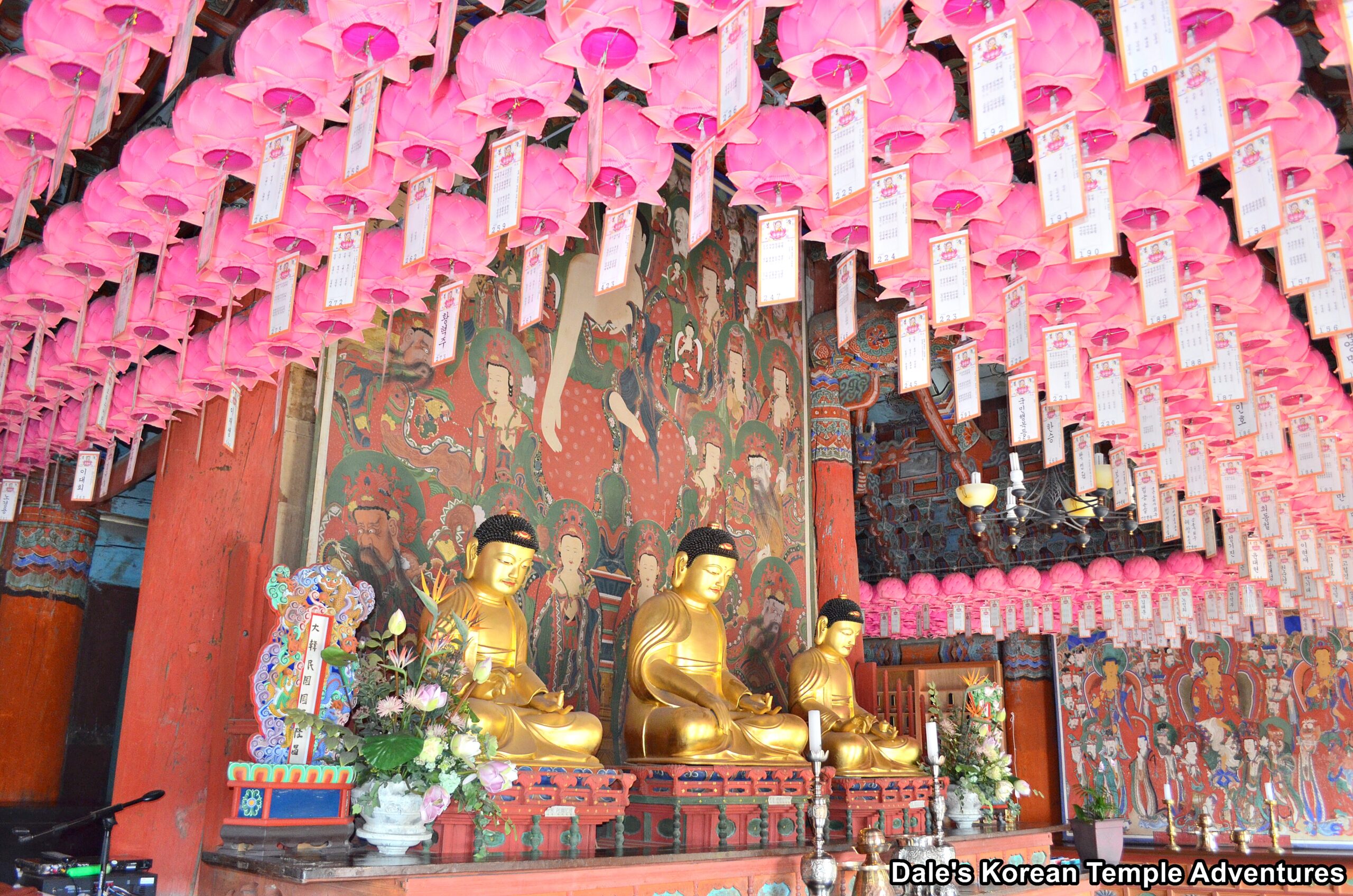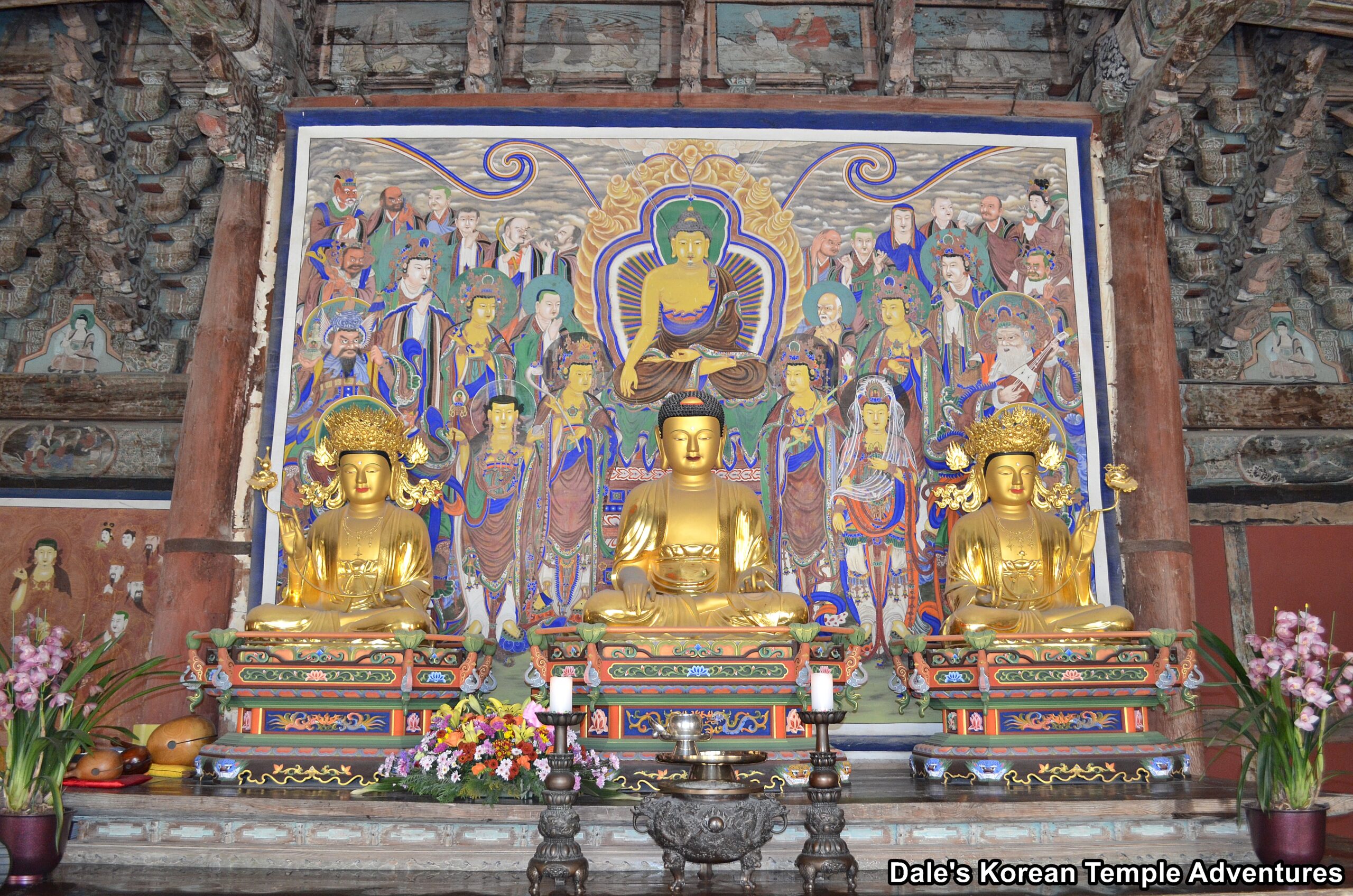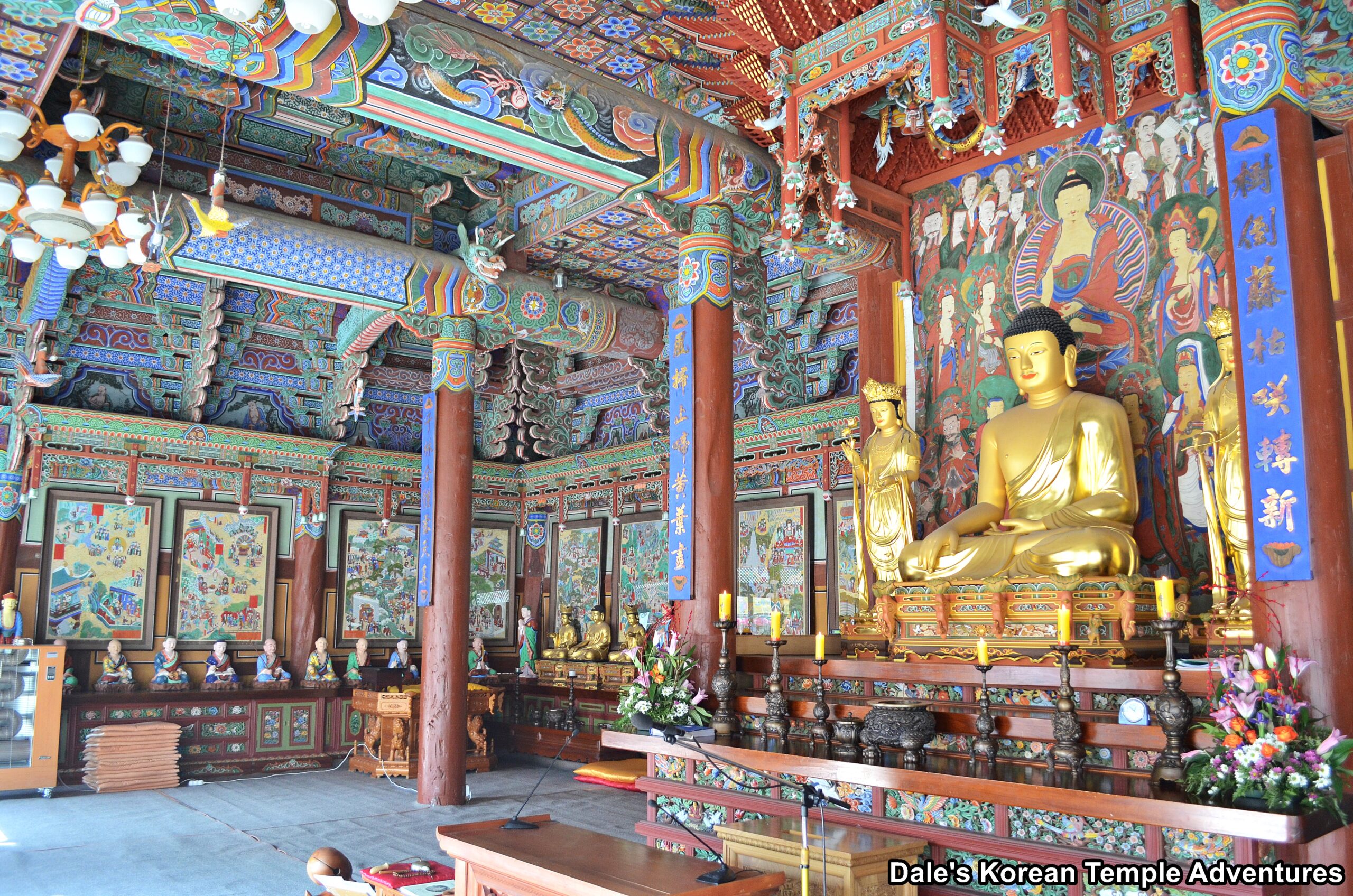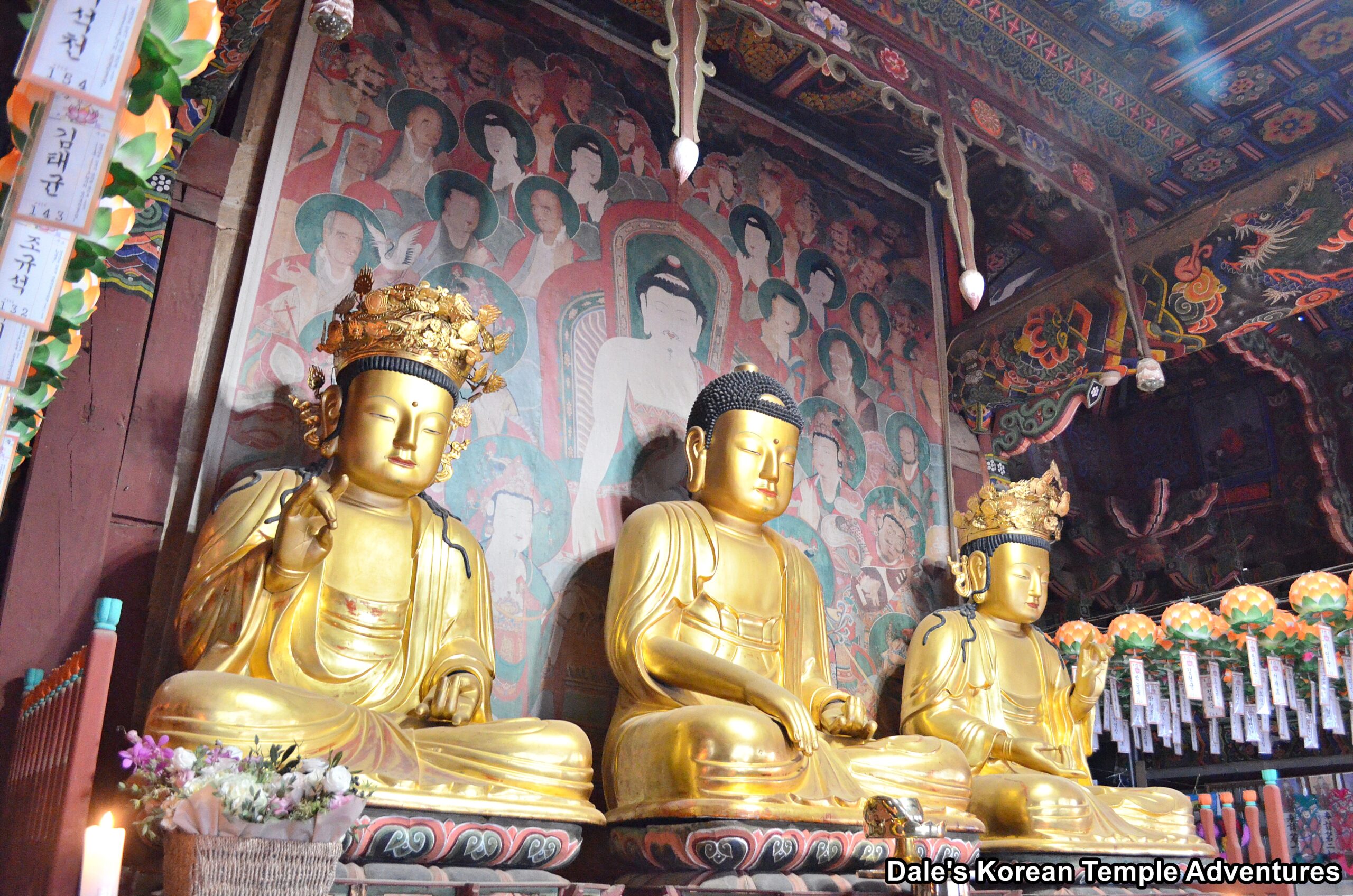The Sermon on Vulture Peak Painting – Yeongsan Hoesang-do: 영산 회상도

The Sermon on Vulture Peak Painting History
The English name for the Yeongsan Hoesang-do is The Sermon on Vulture Peak Painting. It’s a highly symbolic painting that most people see at a Korean Buddhist temple, but they simply don’t understand its meaning. So what does the Vulture Peak painting look like? And what is its meaning?
During the Goryeo Period (918-1392), Amita-bul (The Buddha of the Western Paradise) was the most popular Buddha throughout the Korean peninsula. However, during the early Joseon Dynasty (1392-1910), Seokgamoni-bul (The Historical Buddha) became the most popular main altar Buddha. And this popularity has continued to the present day. The most common triad to be found on the main altar of the main hall at a Korean Seon Buddhist temple or hermitage are the sculptures of Seokgamoni-bul flanked by Munsu-bosal and Bohyeon-bosal. Behind this triad of statues, and on the wall, hangs the Vulture Peak painting.


The Sermon on Vulture Peak Painting Design
In the Vulture Peak painting, the central and dominating figure is Seokgamoni-bul. He’s seated on a lotus pedestal and his hands are forming the “Touching the Earth” mudra (ritualized hand gesture), where his right hand is touching the earth and his left hand still rests in his lap. In the painting, he’s flanked by both Bohyeon-bosal (The Bodhisattva of Power) and Munsu-bosal (The Bodhisattva of Wisdom) who both wear large crowns. The painting, depending on how elaborate it is, will be filled with varying Bodhisattvas and Nahan (The Historical Disciples of the Buddha) that back Seokgamoni-bul. Guardians also inhabit the painting like the Four Heavenly Kings that are positioned in the bottom right and left corners.
The reason that the painting is so well populated and centred by Seokgamoni-bul is that it’s supposed to represent the Lotus Sutra, where the Buddha first preached it on Vulture Peak. This sutra, and therefore the painting, is meant to represent the essential teachings of Seokgamoni-bul. Specifically, the Yeongsan Hoesang-do, or The Sermon on Vulture Peak Painting, is meant to represent the opening chapter of the Lotus Sutra, which tells who participated in the assembly. This chapter also describes what happened before the lecture by the Buddha.
Great Examples
In total, there are thirty-two Vulture Peak paintings that are either National Treasures, Korean Treasures, or a Tangible Cultural Heritage. Of those, three are National Treasures. They can be found at Ansimsa Temple in Cheongwon, Chungcheongbuk-do; Hwaeomsa Temple in Gurye, Jeollanam-do; and Cheonggoksa Temple in Jinju, Gyeongsangnam-do. Of the thirty-two, twenty-six are Korean Treasures. And the remaining three are Tangible Cultural Heritage. It should be noted that the majority of these murals are Gwaebul (Large Buddhist Banner Paintings).
Conclusion
So the next time you’re at a Korean temple or hermitage, have a close look inside the main hall at the main altar. If you look close enough, perhaps you’ll be able to correctly identify the highly elaborate and beautiful Yeongsan Hoesang-do, or the The Sermon on Vulture Peak Painting in English.
